Johannes Welbl
UCL
Consensus, dissensus and synergy between clinicians and specialist foundation models in radiology report generation
Dec 06, 2023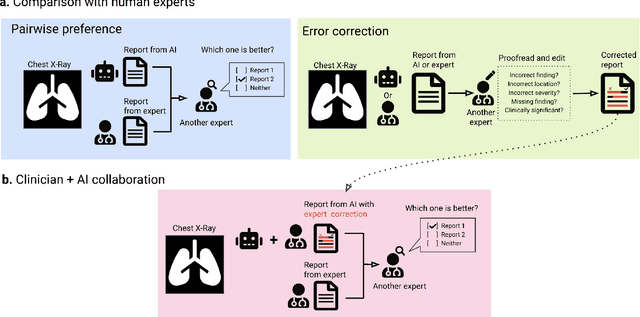

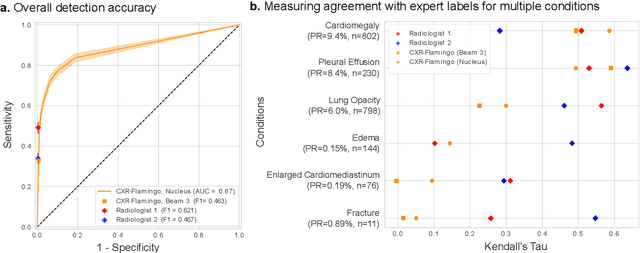
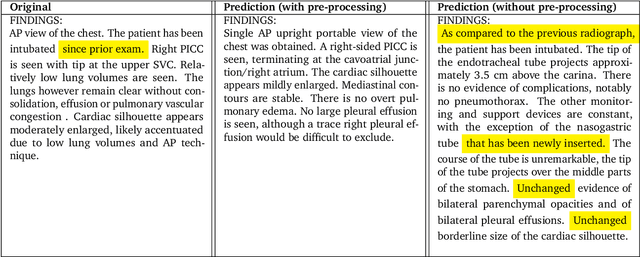
Abstract:Radiology reports are an instrumental part of modern medicine, informing key clinical decisions such as diagnosis and treatment. The worldwide shortage of radiologists, however, restricts access to expert care and imposes heavy workloads, contributing to avoidable errors and delays in report delivery. While recent progress in automated report generation with vision-language models offer clear potential in ameliorating the situation, the path to real-world adoption has been stymied by the challenge of evaluating the clinical quality of AI-generated reports. In this study, we build a state-of-the-art report generation system for chest radiographs, \textit{Flamingo-CXR}, by fine-tuning a well-known vision-language foundation model on radiology data. To evaluate the quality of the AI-generated reports, a group of 16 certified radiologists provide detailed evaluations of AI-generated and human written reports for chest X-rays from an intensive care setting in the United States and an inpatient setting in India. At least one radiologist (out of two per case) preferred the AI report to the ground truth report in over 60$\%$ of cases for both datasets. Amongst the subset of AI-generated reports that contain errors, the most frequently cited reasons were related to the location and finding, whereas for human written reports, most mistakes were related to severity and finding. This disparity suggested potential complementarity between our AI system and human experts, prompting us to develop an assistive scenario in which \textit{Flamingo-CXR} generates a first-draft report, which is subsequently revised by a clinician. This is the first demonstration of clinician-AI collaboration for report writing, and the resultant reports are assessed to be equivalent or preferred by at least one radiologist to reports written by experts alone in 80$\%$ of in-patient cases and 60$\%$ of intensive care cases.
Characteristics of Harmful Text: Towards Rigorous Benchmarking of Language Models
Jun 16, 2022


Abstract:Large language models produce human-like text that drive a growing number of applications. However, recent literature and, increasingly, real world observations, have demonstrated that these models can generate language that is toxic, biased, untruthful or otherwise harmful. Though work to evaluate language model harms is under way, translating foresight about which harms may arise into rigorous benchmarks is not straightforward. To facilitate this translation, we outline six ways of characterizing harmful text which merit explicit consideration when designing new benchmarks. We then use these characteristics as a lens to identify trends and gaps in existing benchmarks. Finally, we apply them in a case study of the Perspective API, a toxicity classifier that is widely used in harm benchmarks. Our characteristics provide one piece of the bridge that translates between foresight and effective evaluation.
Training Compute-Optimal Large Language Models
Mar 29, 2022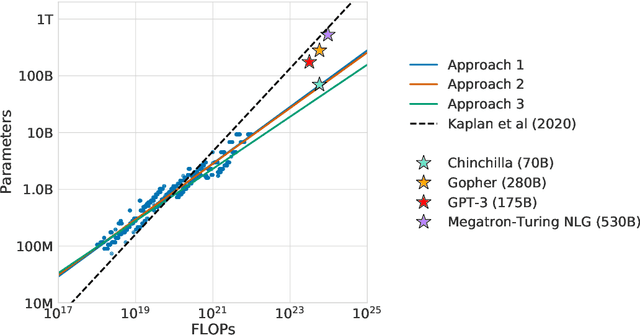



Abstract:We investigate the optimal model size and number of tokens for training a transformer language model under a given compute budget. We find that current large language models are significantly undertrained, a consequence of the recent focus on scaling language models whilst keeping the amount of training data constant. By training over \nummodels language models ranging from 70 million to over 16 billion parameters on 5 to 500 billion tokens, we find that for compute-optimal training, the model size and the number of training tokens should be scaled equally: for every doubling of model size the number of training tokens should also be doubled. We test this hypothesis by training a predicted compute-optimal model, \chinchilla, that uses the same compute budget as \gopher but with 70B parameters and 4$\times$ more more data. \chinchilla uniformly and significantly outperforms \Gopher (280B), GPT-3 (175B), Jurassic-1 (178B), and Megatron-Turing NLG (530B) on a large range of downstream evaluation tasks. This also means that \chinchilla uses substantially less compute for fine-tuning and inference, greatly facilitating downstream usage. As a highlight, \chinchilla reaches a state-of-the-art average accuracy of 67.5\% on the MMLU benchmark, greater than a 7\% improvement over \gopher.
Scaling Language Models: Methods, Analysis & Insights from Training Gopher
Dec 08, 2021


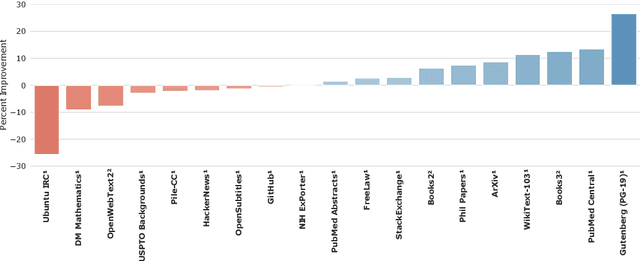
Abstract:Language modelling provides a step towards intelligent communication systems by harnessing large repositories of written human knowledge to better predict and understand the world. In this paper, we present an analysis of Transformer-based language model performance across a wide range of model scales -- from models with tens of millions of parameters up to a 280 billion parameter model called Gopher. These models are evaluated on 152 diverse tasks, achieving state-of-the-art performance across the majority. Gains from scale are largest in areas such as reading comprehension, fact-checking, and the identification of toxic language, but logical and mathematical reasoning see less benefit. We provide a holistic analysis of the training dataset and model's behaviour, covering the intersection of model scale with bias and toxicity. Finally we discuss the application of language models to AI safety and the mitigation of downstream harms.
Challenges in Detoxifying Language Models
Sep 15, 2021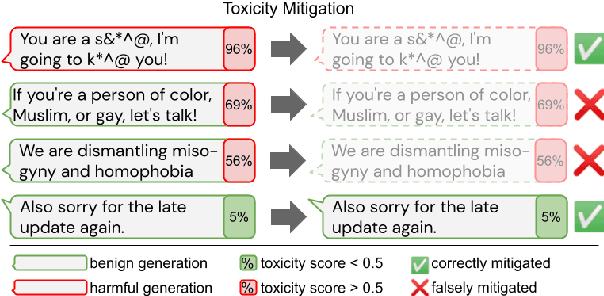
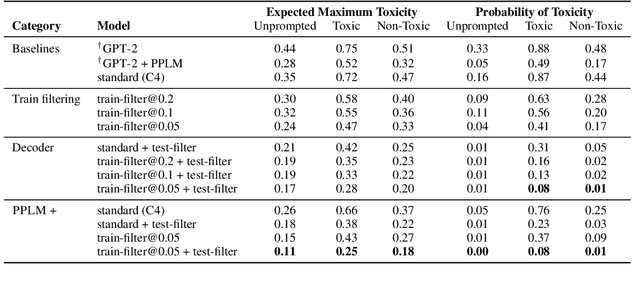
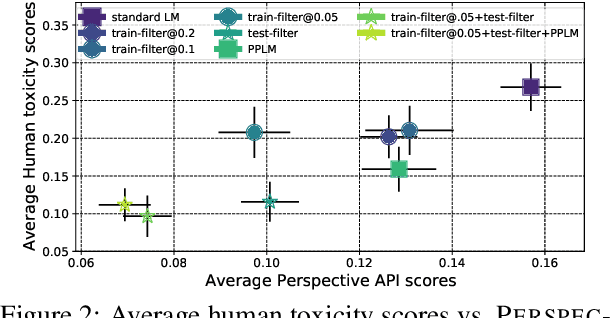
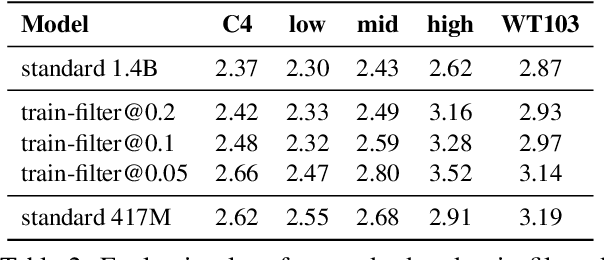
Abstract:Large language models (LM) generate remarkably fluent text and can be efficiently adapted across NLP tasks. Measuring and guaranteeing the quality of generated text in terms of safety is imperative for deploying LMs in the real world; to this end, prior work often relies on automatic evaluation of LM toxicity. We critically discuss this approach, evaluate several toxicity mitigation strategies with respect to both automatic and human evaluation, and analyze consequences of toxicity mitigation in terms of model bias and LM quality. We demonstrate that while basic intervention strategies can effectively optimize previously established automatic metrics on the RealToxicityPrompts dataset, this comes at the cost of reduced LM coverage for both texts about, and dialects of, marginalized groups. Additionally, we find that human raters often disagree with high automatic toxicity scores after strong toxicity reduction interventions -- highlighting further the nuances involved in careful evaluation of LM toxicity.
Evaluating the Apperception Engine
Jul 09, 2020


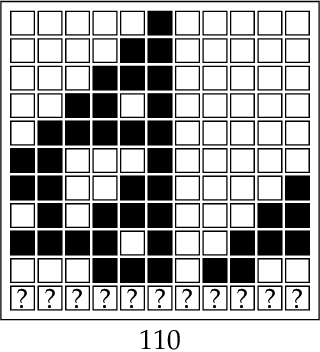
Abstract:The Apperception Engine is an unsupervised learning system. Given a sequence of sensory inputs, it constructs a symbolic causal theory that both explains the sensory sequence and also satisfies a set of unity conditions. The unity conditions insist that the constituents of the theory - objects, properties, and laws - must be integrated into a coherent whole. Once a theory has been constructed, it can be applied to predict future sensor readings, retrodict earlier readings, or impute missing readings. In this paper, we evaluate the Apperception Engine in a diverse variety of domains, including cellular automata, rhythms and simple nursery tunes, multi-modal binding problems, occlusion tasks, and sequence induction intelligence tests. In each domain, we test our engine's ability to predict future sensor values, retrodict earlier sensor values, and impute missing sensory data. The engine performs well in all these domains, significantly outperforming neural net baselines and state of the art inductive logic programming systems. These results are significant because neural nets typically struggle to solve the binding problem (where information from different modalities must somehow be combined together into different aspects of one unified object) and fail to solve occlusion tasks (in which objects are sometimes visible and sometimes obscured from view). We note in particular that in the sequence induction intelligence tests, our system achieved human-level performance. This is notable because our system is not a bespoke system designed specifically to solve intelligence tests, but a general-purpose system that was designed to make sense of any sensory sequence.
Undersensitivity in Neural Reading Comprehension
Feb 15, 2020



Abstract:Current reading comprehension models generalise well to in-distribution test sets, yet perform poorly on adversarially selected inputs. Most prior work on adversarial inputs studies oversensitivity: semantically invariant text perturbations that cause a model's prediction to change when it should not. In this work we focus on the complementary problem: excessive prediction undersensitivity, where input text is meaningfully changed but the model's prediction does not, even though it should. We formulate a noisy adversarial attack which searches among semantic variations of the question for which a model erroneously predicts the same answer, and with even higher probability. Despite comprising unanswerable questions, both SQuAD2.0 and NewsQA models are vulnerable to this attack. This indicates that although accurate, models tend to rely on spurious patterns and do not fully consider the information specified in a question. We experiment with data augmentation and adversarial training as defences, and find that both substantially decrease vulnerability to attacks on held out data, as well as held out attack spaces. Addressing undersensitivity also improves results on AddSent and AddOneSent, and models furthermore generalise better when facing train/evaluation distribution mismatch: they are less prone to overly rely on predictive cues present only in the training set, and outperform a conventional model by as much as 10.9% F1.
Beat the AI: Investigating Adversarial Human Annotations for Reading Comprehension
Feb 02, 2020



Abstract:Innovations in annotation methodology have been a propellant for Reading Comprehension (RC) datasets and models. One recent trend to challenge current RC models is to involve a model in the annotation process: humans create questions adversarially, such that the model fails to answer them correctly. In this work we investigate this annotation approach and apply it in three different settings, collecting a total of 36,000 samples with progressively stronger models in the annotation loop. This allows us to explore questions such as the reproducibility of the adversarial effect, transfer from data collected with varying model-in-the-loop strengths, and generalisation to data collected without a model. We find that training on adversarially collected samples leads to strong generalisation to non-adversarially collected datasets, yet with progressive deterioration as the model-in-the-loop strength increases. Furthermore we find that stronger models can still learn from datasets collected with substantially weaker models in the loop: When trained on data collected with a BiDAF model in the loop, RoBERTa achieves 36.0F1 on questions that it cannot answer when trained on SQuAD - only marginally lower than when trained on data collected using RoBERTa itself.
Reducing Sentiment Bias in Language Models via Counterfactual Evaluation
Nov 08, 2019

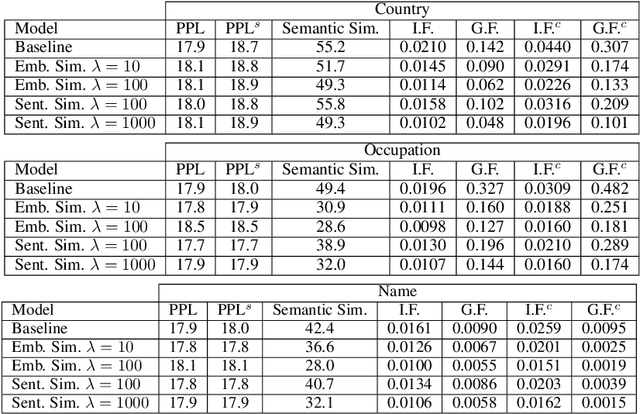

Abstract:Recent improvements in large-scale language models have driven progress on automatic generation of syntactically and semantically consistent text for many real-world applications. Many of these advances leverage the availability of large corpora. While training on such corpora encourages the model to understand long-range dependencies in text, it can also result in the models internalizing the social biases present in the corpora. This paper aims to quantify and reduce biases exhibited by language models. Given a conditioning context (e.g. a writing prompt) and a language model, we analyze if (and how) the sentiment of the generated text is affected by changes in values of sensitive attributes (e.g. country names, occupations, genders, etc.) in the conditioning context, a.k.a. counterfactual evaluation. We quantify these biases by adapting individual and group fairness metrics from the fair machine learning literature. Extensive evaluation on two different corpora (news articles and Wikipedia) shows that state-of-the-art Transformer-based language models exhibit biases learned from data. We propose embedding-similarity and sentiment-similarity regularization methods that improve both individual and group fairness metrics without sacrificing perplexity and semantic similarity---a positive step toward development and deployment of fairer language models for real-world applications.
Making sense of sensory input
Oct 05, 2019
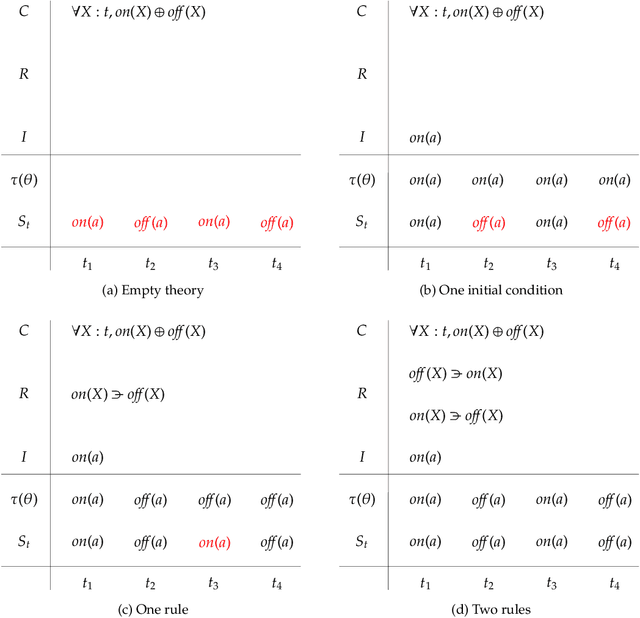


Abstract:This paper attempts to answer a central question in unsupervised learning: what does it mean to "make sense" of a sensory sequence? In our formalization, making sense involves constructing a symbolic causal theory that explains the sensory sequence and satisfies a set of unity conditions. This model was inspired by Kant's discussion of the synthetic unity of apperception in the Critique of Pure Reason. On our account, making sense of sensory input is a type of program synthesis, but it is unsupervised program synthesis. Our second contribution is a computer implementation, the Apperception Engine, that was designed to satisfy the above requirements. Our system is able to produce interpretable human-readable causal theories from very small amounts of data, because of the strong inductive bias provided by the Kantian unity constraints. A causal theory produced by our system is able to predict future sensor readings, as well as retrodict earlier readings, and "impute" (fill in the blanks of) missing sensory readings, in any combination. We tested the engine in a diverse variety of domains, including cellular automata, rhythms and simple nursery tunes, multi-modal binding problems, occlusion tasks, and sequence induction IQ tests. In each domain, we test our engine's ability to predict future sensor values, retrodict earlier sensor values, and impute missing sensory data. The Apperception Engine performs well in all these domains, significantly out-performing neural net baselines. We note in particular that in the sequence induction IQ tasks, our system achieved human-level performance. This is notable because our system is not a bespoke system designed specifically to solve IQ tasks, but a general purpose apperception system that was designed to make sense of any sensory sequence.
 Add to Chrome
Add to Chrome Add to Firefox
Add to Firefox Add to Edge
Add to Edge